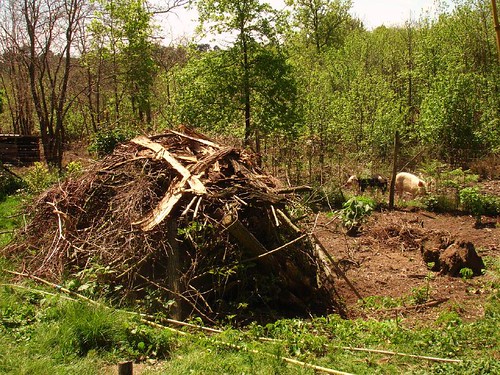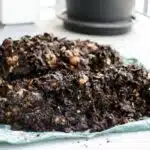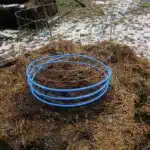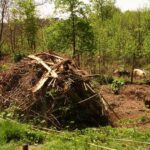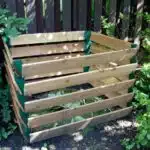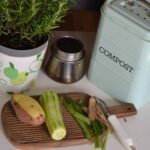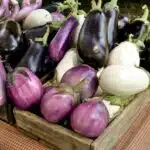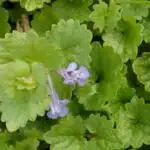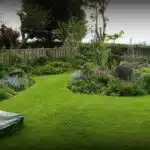Composting is an essential method of recycling organic waste materials into nutrient-rich soil that can be used to cultivate plants. However, many gardeners and farmers are unaware of the potential benefits of composting weeds. Weeds are often seen as a nuisance and a threat to crops, but they can also provide valuable nutrients for the soil when properly composted.
As a composting expert, I have seen firsthand the transformative power of composting weeds. Through my experience, I have learned that not all weeds are created equal when it comes to composting. Certain types of weeds can actually improve the quality of your compost, while others can cause problems if not managed properly. In this article, I will share my knowledge and expertise on how to effectively compost weeds and turn them into a valuable resource for your garden or farm.
Benefits Of Composting
Many gardeners hesitate to compost weeds because they worry about the weeds’ seeds spreading throughout their gardens. However, composting weeds has numerous benefits that far outweigh this concern.
One major benefit of composting is reducing waste. Instead of throwing away weeds and other organic matter, gardeners can turn them into nutrient-rich soil amendments that will benefit their plants. This not only reduces the amount of waste in landfills but also saves money on fertilizers and other gardening supplies.
Another benefit is improving soil health. Composting adds essential nutrients to the soil, such as nitrogen, phosphorus, and potassium. These nutrients help plants grow stronger and healthier, resulting in larger yields and more vibrant flowers. Additionally, compost improves soil structure by increasing its ability to hold water, which reduces erosion and runoff during heavy rains.
Understanding the types of weeds is also important when it comes to composting. Invasive species like bindweed or thistle should be avoided because they can continue to spread even after being composted. On the other hand, edible weeds like dandelions or chickweed are great additions to a compost pile because they break down quickly and add valuable nutrients to the soil. By incorporating these different types of weeds into your compost pile, you can create a healthy ecosystem for your plants while reducing waste at the same time.
Understanding The Types Of Weeds
Composting is an excellent way to reduce organic waste that would otherwise end up in a landfill. It also enriches the soil with essential nutrients, reduces greenhouse gas emissions, and saves money on fertilizers. However, not all materials are suitable for composting. In this section, we will explore the different types of weeds and how to manage them before composting.
Weeds can be invasive or beneficial, common or rare. Invasive weeds spread quickly and aggressively and can displace native plants. Some examples include Japanese knotweed and purple loosestrife. On the other hand, beneficial weeds can provide habitats for beneficial insects and pollinators. Examples of beneficial weeds include clover and dandelion. When choosing which weeds to compost, it is important to consider their potential impact on the ecosystem.
Weed management involves two strategies: prevention and eradication. Prevention involves creating conditions that discourage weed growth, such as mulching or using cover crops. Eradication involves physically removing the weed from the soil or using herbicides. While prevention is ideal, it may not always be possible or effective. If using herbicides, it is crucial to read labels carefully and follow instructions to avoid harming yourself or others.
To identify which weeds are suitable for composting, it is essential to know what type of weed you have in your garden or yard first. Common weeds like crabgrass or chickweed can be easily identified by their appearance and location in your garden bed if you are familiar with them already. Rare weeds might require a bit more research to identify correctly since they are not common enough for people to recognize immediately upon sight alone; however, they could still be useful additions to your compost pile if they meet certain criteria (e.g., non-toxic). Identifying these weeds will help you determine whether they are safe for use in your compost pile or should be avoided altogether due to toxicity concerns.
Transition: Now that we have discussed the different types of weeds and how to manage them, let’s explore which weeds are suitable for composting.
Identifying Weeds Suitable For Composting
Despite the benefits of composting, some gardeners may be hesitant to add weeds to their compost piles. The fear is that the weed seeds will not be destroyed during the composting process and will sprout in the garden when the compost is used. However, with proper identification and management, many weeds can be safely added to a compost pile.
Identifying invasive weeds is crucial before adding them to your compost pile. Invasive weeds are those that spread aggressively and can take over gardens quickly if not controlled. Examples include bindweed, quackgrass, and horsetail. These types of weeds should not be added to a compost pile as they can still grow from small pieces even after being fully decomposed.
Benefits of composting for weed control are numerous. When done properly, composting can help reduce weed growth by increasing soil fertility and microbial activity in the soil. Additionally, adding organic matter such as leaves and grass clippings can help suppress weed growth by blocking sunlight from reaching weed seeds and preventing them from germinating.
| Weeds | Can be Composted? | Notes |
|---|---|---|
| Dandelions | Yes | Remove flowers/seeds before adding |
| Clover | Yes | Adds nitrogen to the soil |
| Crabgrass | No | Can re-root even when fully decomposed |
| Thistle | Yes | Cut into small pieces before adding |
In summary, identifying suitable weeds for composting is an important step towards creating healthy and sustainable gardens. Avoid adding invasive weeds to your compost pile as they can still sprout even after being fully decomposed. Composting can also aid in controlling weed growth by improving soil health and blocking sunlight from reaching weed seeds. With these tips in mind, you’ll soon have a thriving compost pile ready for use in your garden. Next up: preparing your composting site by selecting an appropriate location and gathering necessary materials.
Preparing Your Composting Site
Choosing the Right Location for your composting site is critical to the success of your composting project. You should choose an area that receives a good amount of sunlight, but not too much, as high temperatures can dry out your compost and kill off important microorganisms. Additionally, you’ll want to choose an area that’s relatively flat, so that water doesn’t accumulate in one spot and cause your compost to become waterlogged.
Soil Preparation is also essential when it comes to preparing your composting site. You’ll want to make sure that the soil in your chosen location has a good amount of organic matter and is free from any contaminants or toxins. To improve soil fertility and structure, add some organic materials like grass clippings, leaves, or manure into the soil. This will help provide a healthy environment for the microorganisms needed for successful composting.
By choosing the right location and properly preparing the soil in advance, you’re setting yourself up for a successful compost pile. In our next section, we will discuss how to create your compost pile using the right ingredients and ratios. Remember that successful composting relies on creating an environment that’s hospitable to microorganisms which break down organic matter into nutrient-rich soil. With these tips in mind, you’ll be well on your way to creating a thriving compost pile!
Creating Your Composting Pile
Creating a productive composting pile is the key to successful composting. The first step is to choose a location for your pile. It should be an area that receives some sunlight and has good drainage. The next step is to prepare the site by removing any grass, weeds, or other vegetation from the area. You can use these materials as green matter for your compost.
Once you have prepared the site, it’s time to start building your pile. Begin by laying down a layer of twigs or other coarse material at the bottom of your pile. This will help with drainage and aeration. Then add alternating layers of green matter (such as kitchen scraps, grass clippings, and weeds) and brown matter (such as dried leaves, straw, and wood chips). Be sure to moisten each layer as you go.
Maintaining a healthy compost ecosystem is crucial for success. Turn your pile every few weeks with a pitchfork or garden fork to aerate it and mix up the materials. This will help speed up decomposition and prevent odors from developing. Keep the pile moist but not too wet, and avoid adding meat or dairy products which can attract pests and slow down decomposition.
As you build your composting pile, you may wonder what to do with those pesky weeds that keep popping up in your garden. Adding weeds to your compost is a great way to get rid of them while also adding valuable organic matter to your soil. However, it’s important to make sure that any weed seeds are killed during the composting process so they don’t continue to grow in your garden. In the next section, we’ll discuss how to properly add weeds to your compost so you can create rich, fertile soil for all of your gardening needs.
Adding Weeds To Your Compost
Now that you have created your composting pile, it’s time to start adding organic material. One type of organic material that is commonly found in abundance is weeds. Don’t be so quick to throw them away- they can actually be a great addition to your compost pile.
Benefits of composting weeds include reducing the amount of waste that goes into landfills and creating nutrient-rich soil for your garden. Weeds are often seen as a nuisance, but when added to your compost pile, they can provide valuable nutrients such as nitrogen, phosphorus, and potassium. This makes them an excellent source of “green” material for your compost.
Creative uses for weed compost include using it as a soil amendment or mixing it with other materials to create potting soil. You can also use it to top-dress your lawn or add it to potted plants for extra nutrients. The possibilities are endless when it comes to utilizing this valuable resource.
To ensure that your compost is balanced, you will need to add both green and brown materials in equal proportions. This means that if you’re adding a lot of weeds (which are considered green), you will need to balance them out by adding more brown materials like dried leaves or straw. By doing this, you’ll create a healthy environment for the microorganisms in your compost pile and produce high-quality soil for your garden.
Balancing Your Compost
Composting is an effective way to reduce waste and create nutrient-rich soil for your garden. However, it’s important to balance your compost properly to ensure that it breaks down efficiently. Composting ratios are key to achieving this balance.
The ideal composting ratio is 30 parts carbon (or “browns”) to 1 part nitrogen (or “greens”). Browns include items like dry leaves, straw, and sawdust, while greens include kitchen scraps, grass clippings, and weeds. Too much nitrogen can lead to a smelly compost pile and slow down the decomposition process. On the other hand, too much carbon can make it difficult for microorganisms to break down the materials.
Another factor to consider when balancing your compost is moisture. Your compost pile should be damp but not saturated. Too much water can lead to anaerobic conditions that produce unpleasant odors and slow down the decomposition process. If you find that your compost pile is too dry, add some water with a watering can or hose.
Properly balancing your compost will ensure that it breaks down quickly and efficiently into rich soil for your garden. In the next section, we’ll discuss how to monitor your compost pile to ensure that it stays healthy and productive.
Monitoring Your Compost
Just like tending to a garden, monitoring your compost is essential to ensure that it is thriving. It is comparable to having a pet that needs attention and care. Without it, the life of your compost may be short-lived. Monitoring frequency will depend on the size of your compost pile and the rate at which you add new materials. However, checking once a week is a good rule of thumb.
One crucial aspect of monitoring your compost is keeping an eye on the temperature. The ideal temperature range for composting weeds ranges from 120 to 160 degrees Fahrenheit. Temperatures outside this range may slow down decomposition or even kill off beneficial microorganisms. A simple way to gauge the temperature is by inserting a long thermometer into the center of the pile.
Another crucial factor to monitor in your compost pile is its moisture level. Like all living things, compost needs water to thrive. Too much moisture can lead to anaerobic conditions that produce unpleasant odors, while too little can cause decomposition to stall. A quick check involves squeezing a handful of material; if water drips out, there’s too much moisture present.
Here are four key tips for monitoring your compost:
- Check on it weekly
- Keep track of its temperature
- Ensure proper moisture levels
- Observe any changes in appearance or smell
By consistently monitoring these factors, you can troubleshoot any problems before they become major issues and keep your compost healthy and thriving for use in your garden or landscaping projects in the future! In the subsequent section, we will discuss troubleshooting common composting problems that you may encounter along the way as you continue on this journey towards sustainable gardening practices.
Troubleshooting Common Composting Problems
Too much moisture can be a common composting problem and can lead to anaerobic bacteria that produce a bad odor and can inhibit composting. Imbalance of nutrients in compost can cause problems with microbial activity and composting efficiency. Heat issues can arise from too much nitrogen in the compost pile, which can lead to excessive temperatures, killing beneficial bacteria and organisms. Odor problems can be caused by inadequate aeration, incorrect ratios of carbon to nitrogen, and the presence of toxic materials in the compost pile.
Too Much Moisture
As a composting expert, one of the most common problems that gardeners encounter is too much moisture in their compost pile. This can lead to a variety of issues such as mold growth, unpleasant odors, and slow decomposition. However, preventing mold and managing excess water is relatively easy with a few simple steps.
To prevent mold growth in your compost pile, it’s important to maintain a proper balance of carbon-rich (brown) and nitrogen-rich (green) materials. Too much green material such as fresh grass clippings or kitchen scraps can cause the pile to become wet and compacted, which creates an environment for mold to thrive. To avoid this, add more brown materials like dry leaves or shredded paper to help absorb excess moisture.
Managing excess water is also crucial for healthy composting. If your pile becomes too wet, it can cause anaerobic conditions which produce unpleasant odors and slow down decomposition. To prevent this, make sure your compost bin has adequate drainage and cover it during heavy rainfalls. You can also turn the pile more frequently to help aerate it and promote faster decomposition.
In conclusion, too much moisture is a common problem when composting weeds but it can be easily prevented by maintaining a proper balance of carbon-rich and nitrogen-rich materials and managing excess water properly. By following these tips, you’ll be able to create healthy compost that will enrich your soil and help your garden thrive!
Imbalance Of Nutrients
Composting is a natural process that requires attention to detail for optimal results. One of the common problems encountered by gardeners is an imbalance of nutrients in their compost pile. Nutrient deficiencies can hinder the decomposition of organic material and affect the quality of the finished compost.
To prevent nutrient deficiencies, it’s important to follow proper composting methods. This includes adding a balanced mix of carbon-rich (brown) and nitrogen-rich (green) materials to your pile. Too much of one or the other can cause an imbalance and slow down decomposition. To ensure a balanced mix, aim for a ratio of 3:1 brown to green materials.
Another way to avoid nutrient deficiencies is by turning your compost pile regularly. This helps aerate the pile and ensures that all materials are evenly distributed. It also helps break down larger pieces of compost into smaller ones, which speeds up decomposition.
In summary, maintaining a balanced mix of carbon-rich and nitrogen-rich materials and turning your compost pile regularly are essential steps in preventing nutrient deficiencies. By following these tips, you’ll be able to create high-quality compost that will enrich your soil and promote healthy plant growth.
Working With Other Organic Materials
When troubleshooting common composting problems, it is important to remember that not all organic materials are created equal. Weeds can be a particularly tricky material to compost, as they have the potential to re-root and spread in your garden if not properly broken down. However, with the right techniques and patience, you can successfully compost your weeds.
One method of composting weeds is through the use of worms. Vermicomposting is a process where worms break down organic matter into nutrient-rich castings. By adding your weedy greens to a worm bin, you can speed up the decomposition process and create a valuable fertilizer for your garden. It is important to note that not all weeds are suitable for worm composting – avoid adding any plants that are diseased or have gone to seed.
Another option for composting weeds is through Bokashi composting. This technique involves fermenting organic matter with beneficial microorganisms before placing it in a traditional compost bin or pile. Bokashi bins can handle a wider variety of materials, including meat and dairy products, which makes them a versatile tool for any gardener looking to reduce their waste output.
By properly composting your weeds using these techniques, you can turn what might otherwise be considered a nuisance into an asset for your garden. In the next section, we will explore how to use your finished compost to nourish your plants and promote healthy soil.
Using Your Compost In The Garden
One of the best ways to use your compost in the garden is by making compost tea. Compost tea is a liquid fertilizer that can be sprayed directly onto plants, providing them with essential nutrients and minerals. To make compost tea, simply steep a few scoops of your finished compost in a bucket of water for several days, stirring occasionally. Once the mixture has turned a rich brown color and smells earthy, it’s ready to use.
Another way to use your compost in the garden is by adding it to soil when planting new plants or vegetables. Simply mix a few scoops of your finished compost into the soil before planting, ensuring that it’s evenly distributed throughout the area. This will provide your plants with all the necessary nutrients they need to grow strong and healthy.
Finally, don’t forget about composting kitchen scraps! Rather than throwing away food waste such as fruit and vegetable peelings or coffee grounds, add them to your composter instead. These scraps will break down over time and become nutrient-rich soil that can be used throughout your garden. By doing this, you’ll not only reduce food waste but also create a sustainable source of fertilizer for your plants.
As you begin using your finished compost in the garden, it’s important to consider how you’ll store any unused portions. One option is to simply keep it in an airtight container until you’re ready to use it again. However, if you have larger quantities of finished compost that need storing, consider creating a dedicated storage space outside where it can sit undisturbed until needed. By doing so, you’ll ensure that your precious compost stays fresh and usable for future gardening endeavors.
Storing Your Compost
As gardeners, we know that the key to a thriving garden is healthy soil. One of the best ways to achieve this is through composting. Composting weeds is an excellent way to get rid of them while also providing valuable nutrients for your plants. However, it’s important to do it correctly to avoid spreading weed seeds and other pests.
When composting weeds, it’s essential to use a compost container or bin to keep everything contained and prevent unwanted critters from getting in. Make sure the bin has good drainage and ventilation to keep the compost aerated and moist. It’s best to use a variety of weeds in your compost pile rather than just one type, as this will create a more balanced mix of nutrients.
Proper storage is also crucial when it comes to composting. Once your compost pile is ready, transfer it into a storage container or bag that can be kept in a cool, dry place until you’re ready to use it in your garden. Using high-quality storage containers will help prolong the life of your compost by reducing exposure to moisture and pests. By following these simple tips, you can ensure successful composting and enjoy healthier plants all season long.
As important as proper storage is for successful composting, there are other tips you need to follow to maximize the benefits of your efforts. In the next section, we’ll discuss some additional steps you can take for successful composting at home.
Tips For Successful Composting
Successful composting requires careful attention to detail, and there are a few key tips that can help you achieve the best results. Firstly, it’s important to choose the right container for your composting needs. Composting containers come in a variety of shapes and sizes, from simple plastic bins to more elaborate wooden structures. Choose one that suits your space and budget, but also consider the materials you will be adding to the compost – some containers may be better suited to certain types of waste than others.
Another important tip is to make sure your compost is well-balanced. This means including a mix of “green” materials (such as kitchen scraps and fresh grass clippings) and “brown” materials (like dried leaves and branches). You should also aim for a good balance of moisture, which can be achieved by adding water as needed or covering the compost with a tarp during rainy periods. Regular turning or mixing can also help ensure that all parts of the compost are evenly broken down.
Finally, consider using “weed tea” fertilizer as an additional boost for your plants. To create weed tea fertilizer, simply steep weeds (or other plant material) in water for several days until it becomes dark and fragrant. Then strain out any solids and use the liquid to fertilize your garden. This organic fertilizer is rich in nutrients and can help promote healthy growth without relying on chemical fertilizers.
Transition: While these tips can help you achieve successful composting results, there are also common mistakes that should be avoided in order to get the most out of your composting efforts.
Common Mistakes To Avoid
Composting is a great way to reduce garden waste, however, it is important to be aware of the common mistakes that can be made in order to ensure an effective composting process. Not aerating the compost, not rotating the compost, not adding enough moisture, not adding enough green material, not layering compost, and not adding enough brown material are all mistakes that should be avoided. Additionally, it is important to manage the temperature, remove any weeds, regularly turn the compost, monitor the pH level, add microorganisms, properly cover the compost, add enough nitrogen, remove large debris, and protect the compost from animals.
Not Aerating Compost
Aerating compost is a crucial step in the composting process. It involves mixing up the compost pile to allow air to circulate, which helps break down organic matter faster. Failing to aerate your compost can result in unpleasant odors and slow decomposition. As a composting expert, it is important to stress the benefits of aerating and how often it should be done.
The benefits of aerating your compost pile are numerous. By allowing air to circulate, you create an environment that promotes the growth of beneficial microorganisms that break down organic matter into nutrient-rich soil. This process speeds up decomposition, reduces foul odors, and prevents pests from infesting your pile. Ultimately, aerating your compost results in a better quality end product that can be used for gardening or landscaping.
When it comes to how often you should aerate your compost, there are no hard and fast rules. However, most experts recommend doing it every one to two weeks. If you have a large pile or live in a hot climate, you may need to aerate more frequently. On the other hand, if you have a smaller pile or live in a cooler climate, you may be able to get away with aerating once a month. The key is to monitor your compost closely and look for signs that it needs more oxygen.
In conclusion, if you want high-quality compost that is ready for use in your garden or landscape, it is important not to neglect the step of aerating your pile. By doing so regularly and monitoring your compost closely for signs of oxygen depletion, you can ensure that your end product is rich in nutrients and free from unpleasant odors or pests. As a passionate advocate for serving others through sustainable practices like composting weeds properly, I encourage everyone who wants to make an impact on their community’s environmental health and food systems towards this simple yet powerful technique – Aerating Compost!
Not Rotating Compost
As a composting expert, it is important to educate people on the common mistakes to avoid in order to achieve successful composting. One of these mistakes is not rotating the compost pile. While this step may seem trivial, it can actually have a significant impact on the quality and efficiency of your compost.
The benefits of rotating your compost are numerous. By turning the pile regularly, you ensure that all parts of the pile are exposed to oxygen and moisture, which are essential for breaking down organic matter. This helps speed up decomposition and produces a better quality end product. In addition, rotating your pile helps prevent unpleasant odors and pests from infesting your compost.
However, there are also challenges that come with rotating your compost. For one, depending on how large your pile is, it can be physically demanding to turn it over. Additionally, if you don’t turn your pile often enough or at the right times, you could disrupt the growth of beneficial microorganisms that break down organic matter into nutrient-rich soil. To avoid these challenges and ensure effective rotation techniques when it comes to composting, here are some tips:
Not Adding Enough Moisture
Moisture management is a crucial aspect of successful composting. One common mistake that many people make when composting is not adding enough moisture to the pile. While it may seem counterintuitive, keeping your compost pile moist is essential for the breakdown of organic matter. Without enough moisture, microorganisms that break down the material will not be able to thrive. In addition, if your compost pile is too dry, it can lead to unpleasant odors and slow down decomposition.
To avoid this mistake, it’s important to monitor the moisture level of your compost regularly. A good rule of thumb is to keep your pile as damp as a wrung-out sponge. This means that when you grab a handful of compost and squeeze it, water should come out but it shouldn’t be dripping wet. If your pile feels too dry, add water gradually until you reach the desired level of moisture.
Another way to ensure proper moisture management in your compost is by layering brown and green materials. Brown materials such as dried leaves or twigs are high in carbon and help absorb excess moisture, while green materials like grass clippings or food scraps are high in nitrogen and provide essential nutrients for microorganisms. By alternating these layers and keeping them moist, you can create an optimal environment for decomposition while avoiding common mistakes in composting such as not adding enough moisture.
Sustainable Composting Practices
As the saying goes, “one man’s trash is another man’s treasure.” This rings true in the world of composting, where even weeds can be turned into valuable soil amendments. However, there are common mistakes to avoid when composting weeds. One of the biggest mistakes is not properly containing the composting process.
Composting containers are an essential tool for successful weed composting. Not only do they help contain the pile and prevent it from spreading, but they also allow for better control over the temperature and moisture levels within the pile. This helps to speed up the decomposition process and reduces the risk of smells or pests.
Another important aspect of sustainable weed composting is reducing waste. This means avoiding adding weeds that have gone to seed or those that may harbor disease. It also means being mindful of other waste materials that can be added to the pile, such as kitchen scraps or yard trimmings. By reducing overall waste and being selective about what is added to the pile, you can create a high-quality compost that will benefit your garden for years to come.
Overall, by using proper composting containers and reducing waste, you can turn even pesky weeds into a valuable resource for your garden. With a little knowledge and effort, you can create a healthy and sustainable garden ecosystem that benefits both you and the environment around you.
Conclusion
Composting is a sustainable and environmentally friendly way to dispose of weeds that would otherwise end up in landfills. By composting weeds, we can create nutrient-rich soil that can be used to grow healthy plants, while reducing waste and greenhouse gas emissions. Understanding the types of weeds and identifying those suitable for composting is crucial in achieving successful results.
Preparing your composting site and creating your pile requires careful thought and attention to detail. Ensuring that your pile contains the right combination of materials, such as green and brown matter, moisture, and air circulation, will lead to optimal decomposition. Storing your compost properly is also essential in maintaining its quality.
To achieve successful composting, it is important to avoid common mistakes such as adding too much water or not properly turning the pile. Sustainable composting practices include using organic matter from your garden or kitchen instead of chemical fertilizers, and using a compost bin made from recycled materials.
In conclusion, composting weeds is a sustainable solution that benefits both our environment and gardens. By understanding the types of weeds suitable for composting, preparing your site correctly, creating a balanced pile with proper storage techniques, you can achieve nutrient-rich soil for healthy plant growth while reducing waste. Remember to practice sustainable composting practices by avoiding harmful chemicals and using recycled materials whenever possible. Let’s work together towards a greener future!
Image Credits
- “One of our compost piles made with branches, wool, weeds etc makes a hugelkultur pile” by hardworkinghippy : La Ferme de Sourrou (featured)

